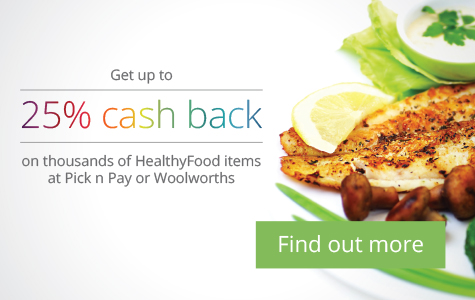Please click here to login into Discovery Digital Id

Cut back on added sugar
Sugar can be divided into two categories, namely sugars naturally present in food (such as in fresh fruit and vegetables, and milk) and free (added) sugars (such as glucose, fructose, and sucrose (table sugar)). Free sugars are added to food either in the manufacturing stage or when the food is being prepared or cooked. Sugars naturally present in honey, syrups, fruit juices, and fruit juice concentrates are also seen as free sugars. Eating too much free or added sugars can lead to rotten teeth, obesity, and diabetes, among other things.
What’s so bad about added sugar?
Consuming added sugars contributes ‘empty’ kilojoules to your diet. This means that while food and drinks high in added sugar is high in energy (kilojoules), it contains no or few of the vitamins, minerals or fibre we need for good health. Regularly eating food and drinks high in added sugar can lead to excessive energy intakes and increase your risk for overweight and obesity, which are major risk factors for developing lifestyle diseases (type 2 diabetes, heart disease, certain cancers, and musculoskeletal disorders such as osteoarthritis). A high intake of free sugars (which is above 10% of total energy intake) also increases your risk of developing dental caries (tooth decay).
What should my sugar intake be?
The World Health Organization (WHO) recommends that adults and children should reduce their daily intake of free sugars to less than 10% of their total energy intake. A further reduction to below 5% or roughly 25 grams (6 teaspoons) per day would provide additional health benefits. The American Heart Association recommends limiting added sugar intake to around 6 teaspoons per day for women and 9 teaspoons per day for men.
Tips for cutting back on added sugar
- Limit the amount of sugary drinks and snacks in your diet. The biggest culprits are soft drinks, sweets, chocolates, biscuits, jams, pastries, puddings, ice-cream, and condiments (especially sauces).
- It’s best to cut out sugary drinks (including fruit juice) altogether and instead drink plain water, milk, or unsweetened herbal teas when thirsty.
- If you miss the fizz and flavour of sugary drinks, try infusing sparkling water with fresh fruit or vegetable chunks, or herbs such as mint.
- Gradually reduce the sugar you add to your tea, coffee, and breakfast cereals until you can have them without any added sugar at all. Make use of the natural sweetness of fresh fruit to sweeten breakfast cereals.
- Instead of spreading jam, marmalade, syrup, or honey on your toast or sandwiches, use cottage cheese or mashed avocado instead.
- Be sure to check ingredients lists on food labels as sugar is often hidden in foods. Sugar has many other names - besides those ending in “ose,” such as maltose or sucrose, other names for sugar include high fructose corn syrup, molasses, cane sugar, raw sugar, syrup, honey, or fruit juice concentrate. The higher up sugar is listed in the ingredients list, the more sugar the product contains.
- Halve the amount of sugar you use in recipes as you can get away with this in almost everything except jams, meringues and ice cream.
- Fresh fruit is always best, but if you choose tinned fruit, choose those tinned in natural juice instead of syrup and drain the juice before eating.
- For breakfast, opt for oats or a boiled egg on whole-wheat toast over sugar- or honey-coated cereals.
References
American Heart Association (AHA). 2017. Added sugars. http://www.heart.org/HEARTORG/HealthyLiving/HealthyEating/Nutrition/Added-Sugars_UCM_305858_Article.jsp#.WS53qVWGOpo Date of access: 31 May 2017.
Temple, N.J & Steyn, N.P. 2013. Sugar and health: a food-based dietary guideline for South Africa. South African journal of clinical nutrition, 26(3)(Supplement):S100-S104.
U.S. Department of Health and Human Services & U.S. Department of Agriculture. 2015–2020 Dietary Guidelines for Americans. 8th Edition. http://health.gov/dietaryguidelines/2015/guidelines/ Date of access: 22 Jun. 2017.
World Health Organization (WHO). 2015. WHO calls on countries to reduce sugars intake among adults and children. http://www.who.int/mediacentre/news/releases/2015/sugar-guideline/en/ Date of access: 31 May 2017.
World Health Organization (WHO). 2016. Obesity and overweight. http://www.who.int/mediacentre/factsheets/fs311/en/ Date of access: 31 May 2017.

